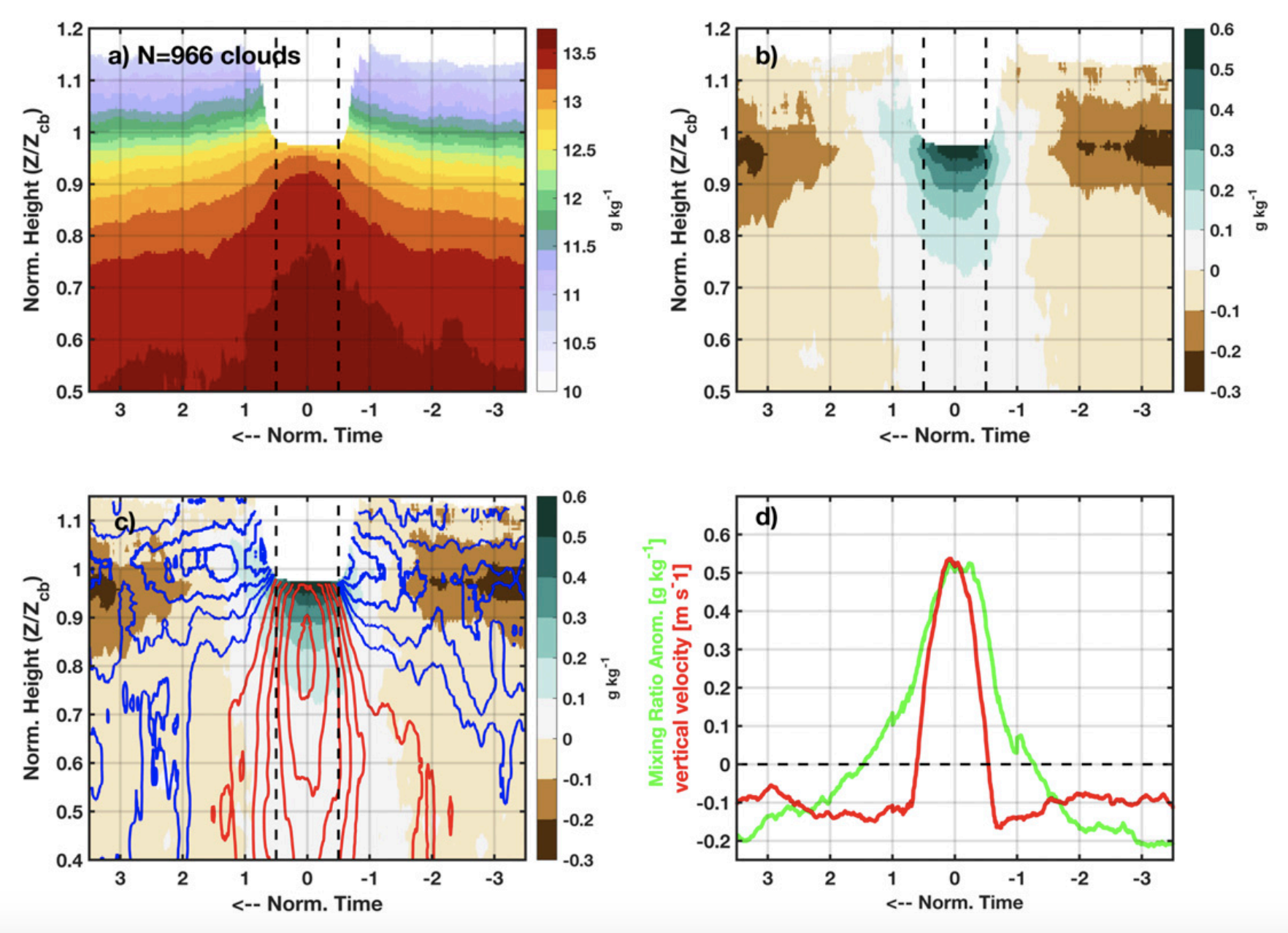Subcloud and cloud-base latent heat fluxes during shallow cumulus convection
Submitter:
Lareau, Neil — University of Nevada Reno
Area of research:
Atmospheric Thermodynamics and Vertical Structures
Journal Reference:
Science
High-resolution laser remote sensors are used to quantify the transport of water vapor in updrafts and downdrafts. These data show how water vapor is removed from near earth's surface by convective processes and help improve our understanding of how clouds are initiated.
Impact
Combined Doppler and Raman lidars provide a long-term quantification of water vapor fluxes in the subcloud layer. These data quantify the role of entrainment fluxes and cloud base venting of moisture in drying the cumulus-topped convective boundary layer. These results advance our understanding of boundary-layer processes that control shallow convection and set the stage for improved model validation by providing highly resolved profiles of latent heat fluxes that can be compared with large-eddy simulations.
Summary
Doppler and Raman lidar observations of vertical velocity and water vapor mixing ratio are merged to quantify the latent heat flux from the surface to the top of the cumulus-topped convective boundary layer. Using data from a large sample of days with cumulus conditions and a novel filtering technique, we provide new insights into the process-level details of how large eddies act to dry the boundary layer. Specifically, these eddies transport moist air up to cloud base and mix dry air from the free troposphere into the boundary layer. The net result is a strong drying trend on the boundary layer. We examine the sensitivity of these fluxes to (a) averaging intervals, (b) cloud fraction, and (c) the strength of the humidity jump a the top of the boundary layer. Finally, we also examine composites of the cloud base circulation and cloud-by-cloud fluxes of water vapor.



